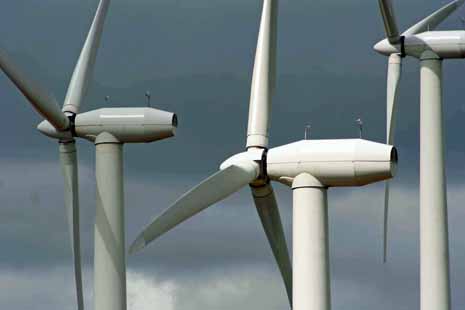I do love life’s little ironies. “The Kentucky Coal Mining Museum is switching to solar power,” CNN reported the other day. “The museum, which memorializes Kentucky’s history in coal mining, is modernizing with a new form of cheaper energy.”
That action, of course, is not an acknowledgement of the reality that CO2 is complicit in climate change (or even that man-caused climate change exists or should be of concern). It is a rational response to very real market factors. But the mining museum’s decision is typical of choices being made every day around the world. Decisions by believers in climate change and by staunch climate change deniers. Wyoming Gov. Matt Mead explained this quite eloquently in his infamous declaration that Wyoming would “double down on coal.” To paraphrase, he said it doesn’t matter whether climate change is a real threat or not, but since the market is reacting as though it is real, we must behave as though it is. Mead’s idea of how to acknowledge these market realities but still continue to produce millions of tons of coal a year is to engineer away the harmful effects of coal combustion by perfecting carbon capture and sequestration (CCS) processes to capture CO2 and somehow store it underground.
And he’s not the only one. Cloud Peak Energy President Colin Marshall, writing to President Trump that “we do not want to ignore the two-thirds of Americans who believe that climate change is happening and that CO2 emissions play a role,” suggested a long wish list of taxpayer subsidies that would help the industry prosper, regardless of this belief: Tax credits, private activity bonds, master limited partnerships, price supports and public financing of CCS technology. All these to “ensure prosperity” while helping us forget about climate change.
Mr. Marshall’s “prosperity” would flow to coal company executives and shareholders, however, and not to miners, consumers or taxpayers. Coal mining jobs per ton of coal produced keep shrinking. Some Australian mines now even use “autonomous” (self-driving) coal trucks. Watch for them in Gillette. In 2017, the solar industry employed 43% of the workforce of the US electric power generation sector, more that the 22% employed by coal, oil and gas combined. The other 35% were primarily from wind, hydro & nuclear. There are now twice as many solar workers in the US as there are coal miners. In the last decade, net power generation from coal has shrunk 53%, while natural gas generation has increased 33% and utility-sized solar has grown 5,000% from its tiny base.
So it’s happening all around us. The market has changed and continues to change. Gov. Mead’s holy grail of CCS has already been left in the dust, as utility-scale wind and solar generation are today more economic that coal generation using CCS. According to a WORC fact sheet, in some places wind energy is being delivered cheaper that natural gas energy and cheaper than coal energy, even without the added expense of CCS. Wyoming needs to wake up and diversify into the world as it is, and stop daydreaming about a magical return to coal’s heyday.
Wyoming’s largest utility, Warren Buffett’s PacifiCorp, in their new Integrated Resource Plan, pledges “to transition to a cleaner energy future with near-term investments in both existing and new renewable resources, new transmission infrastructure, and energy efficiency programs.” Over their 20-year planning horizon, PacifiCorp’s preferred portfolio will acquire 1,959 megawatts (MW) of new wind resources, 905 MW of upgraded (“repowered”) wind resources, 1,040 MW of new solar resources, 2,077 MW of incremental energy efficiency resources, and 365 MW of new direct load control capacity. They plan to close down 3,650 MW of existing owned coal capacity during this period.
PacifiCorp is not part of a mythical “war on coal.” They are simply following the market. They are determining the cheapest, most efficient and reliable way to produce electricity, and meeting their ratepayers’ best interests.
You’ll notice in this issue of Powder River Breaks an accounting of our own small contribution to the movement away from CO2-emitting fossil fuel generation. Every issue from now on will report on the kilowatt-hours generated by our rooftop solar array, and the amount of carbon that would otherwise have entered the atmosphere from fossil fuel generation had we not used our solar panels (the “carbon offset”). Similar offsets come from driving our hybrid Prius, from insulating our building, and switching off lights. Unlike Cloud Peak Energy, we don’t need a huge lobbying budget or billions in tax breaks and government research support. We just need to care and to pay attention. Millions of people around the world know this, and that’s why the market is rapidly leaving coal behind – regardless of whether Wyoming “doubles down.”
Powder River Solar Energy Production
|
– Bob LeResche wrote this commentary for the Powder River Breaks, the newsletter of the Powder River Basin Resource Council. Bob is the Chair of Powder River and a member of WORC’s Board of Directors.

